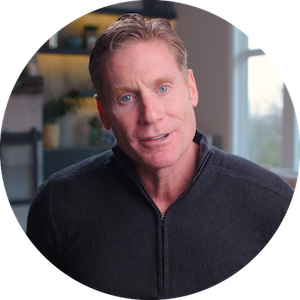What Are the Final Pieces of a Complete Development Plan?
Have you ever wondered why even the best-planned projects sometimes lose momentum right before the finish line?
I've seen this happen countless times—in my work with parents, families, and even top performers in business and sports. People get fired up, set ambitious goals, map out strategies, but somehow stall right before the crucial last steps. That's why understanding the final pieces of a development plan is so crucial. It's about crossing that finish line confidently and effectively.
Know Exactly When You're Done
One essential point that comes up frequently, whether it's from my own practice or insights from cognitive behavioral therapy, is the importance of clarity. You need to be able to pinpoint exactly when your development plan is complete. Without this, you're likely to keep chasing goals that move just out of reach. This often leads to burnout or frustration.
Dr. Ellen Reed has always stressed to me how critical it is to clearly define your finish line. This means setting precise, measurable outcomes. Instead of vaguely aiming to "be more mindful," you should specify outcomes like "spend ten uninterrupted minutes daily in mindfulness practice for 30 days." Specificity makes your goals attainable—and gives you a clear point to celebrate your achievement.
Don’t Overlook Flexibility
One of the common pitfalls I've observed (and Dr. Jason Selk often highlights) is how rigid plans can collapse under real-world pressures. Flexibility isn't optional; it's mandatory. Even in software development, successful teams plan for changes. Here's an article that outlines why adaptability is key.
If a major stressor suddenly pops up—maybe your family’s routine changes or there's a new responsibility—you need room in your plan to pivot without panic. Your plan should feel supportive, not restrictive.
Keep the Right Tools Handy
Using the right tools can truly make or break your final stretch. For instance, parents I've worked with have found incredible clarity by using a dedicated journal to track and reflect their progress. I highly recommend taking the time to build a personal development plan that includes journaling. It’s simple yet incredibly effective.
In my experience, tools shouldn't complicate your life. They should make things simpler. Apps can also help—especially those designed specifically for mental health. If you're curious about what makes these apps effective, check out this concise guide to app development.
Ready to Finish?
Let's finalize your development plan together, starting today.
Understand When to Let Go
This may sound strange, but knowing when to let go can be one of the hardest final steps in a development plan. Jason once pointed out something that stuck with me: people tend to add and complicate instead of simplifying and letting go. It’s tempting to keep refining, tweaking, or perfecting—but sometimes good enough really is good enough. Recognizing that point is crucial for long-term success.
Actionable Steps Are Everything
I've noticed over the years that what separates successful plans from unsuccessful ones is their ability to prompt action. It's easy to fill a notebook with lofty ideas, but it's harder to consistently act on them. Your plan should clearly state exactly what you're going to do next. That’s why I always emphasize knowing exactly what makes your development plan truly actionable. Clarity creates momentum.
Anticipate Challenges, Celebrate Wins
One thing Dr. Reed consistently teaches is the power of visualizing challenges beforehand. This doesn’t mean expecting failure—it means being ready to navigate any bumps that come your way. Visualizing how you'll handle setbacks ahead of time can dramatically reduce anxiety and stress when they happen.
But don't just focus on obstacles. Make sure you also celebrate your wins, no matter how small. Celebrations create positive emotional connections with your plan. The more positive feelings associated with your plan, the more likely you'll stick to it until completion.
Bring It All Together
Every effective development plan I've seen follows these core principles: clear endpoints, built-in flexibility, practical tools, knowing when to let go, actionable next steps, and balanced anticipation of challenges and celebrations. By integrating these elements, you’re not just planning—you’re setting yourself up to succeed.
Now, it's your turn. You have the insights and the tools. All that's left is for you to make it happen. Trust your process, trust your plan, and watch how smoothly you cross the finish line.
References
- "Software Project Management Phases & Best Practices." Smartsheet, www.smartsheet.com/content/software-project-management . Accessed 15 May 2025.
- "How to Build a Mental Health App." Topflight Apps, topflightapps.com/ideas/how-to-build-a-mental-health-app/ . Accessed 15 May 2025.


